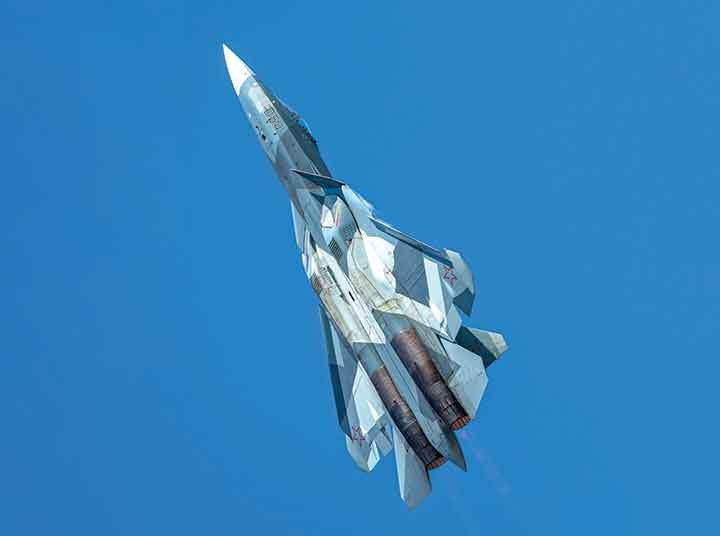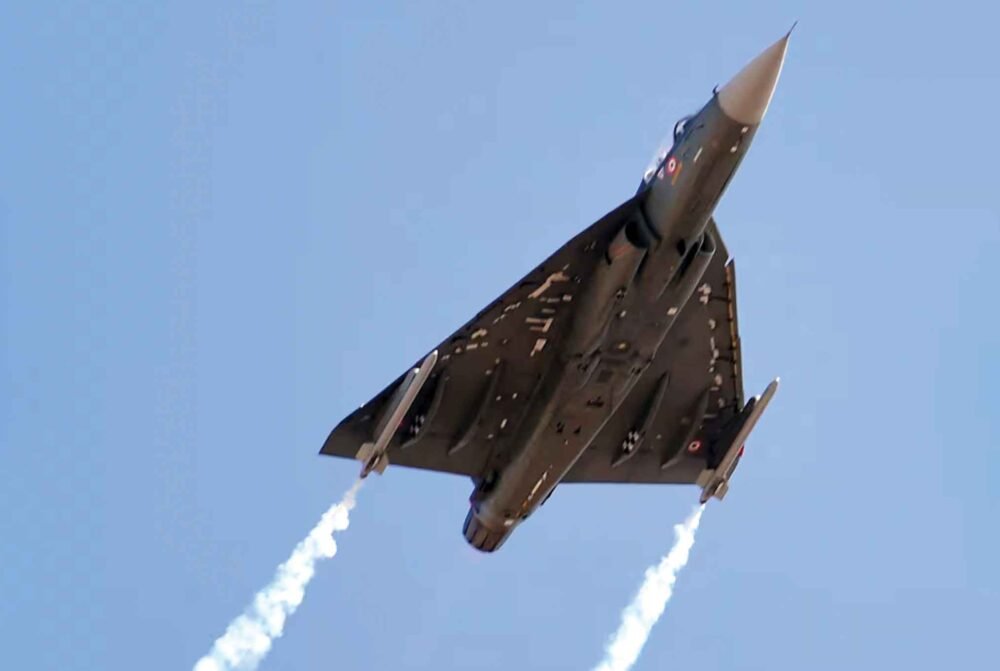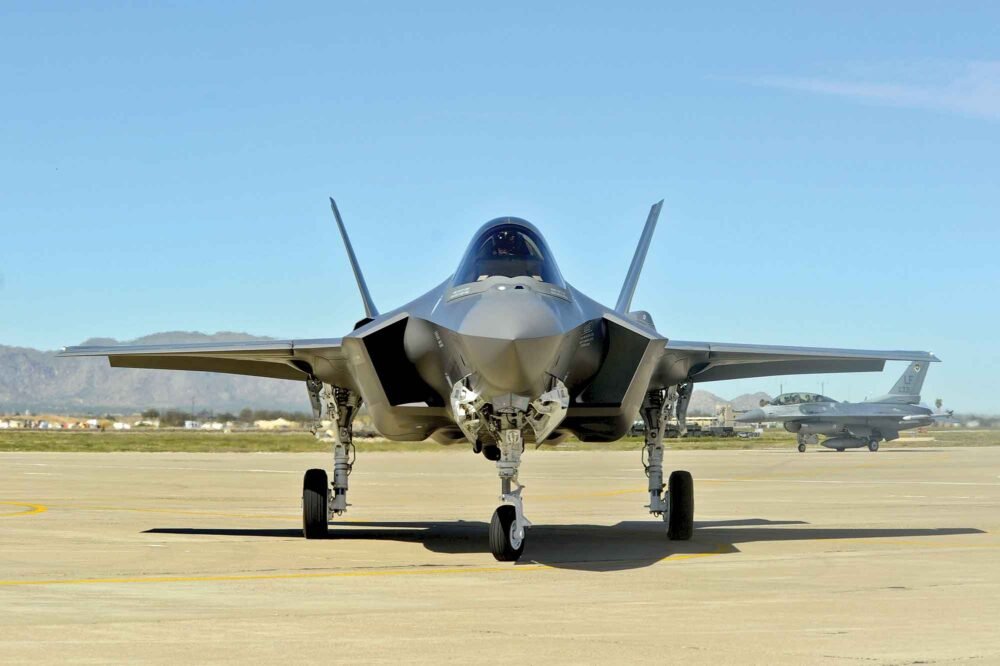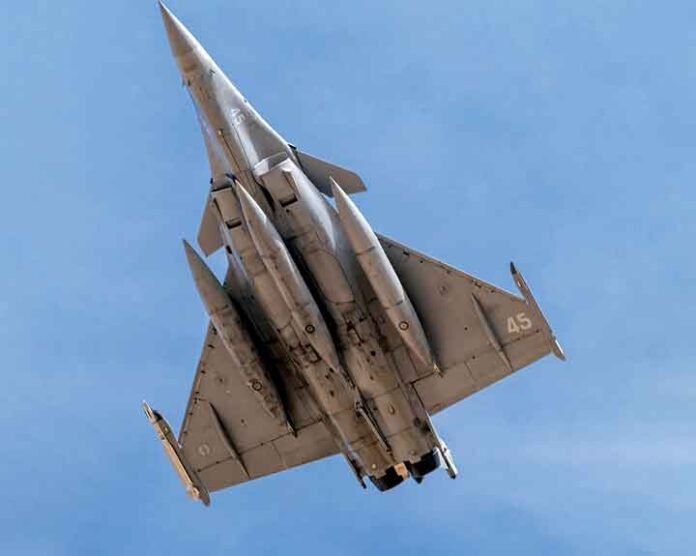As the Indian Air Force (IAF) celebrated its 93rd anniversary on October 8 2025, it also bade a grand farewell on 26 September to its longest-serving fighter fleet, the MiG-21. Behind these two events, the decline in the number of fighter squadrons has become sharply evident. The Indian Air Force now stands at a pivotal crossroads, facing a chronic squadron shortfall—down to 29 from the authorised 42 squadrons—and driven by rapidly changing regional security dynamics, increasing adversary capabilities, and the urgent need to achieve long-term technological independence.
While the Tejas Mk 2 and the 5th generation AMCA (Advanced Medium Combat Aircraft), which would take more than a decade to develop, are anticipated, the IAF is looking to acquire 114 MRFA (Multi-Role Fighter Aircraft – a rebranding of the earlier unsuccessful tender for Medium Multi-Role Combat Aircraft, MMRCA), or other medium/heavy fighters to meet immediate requirements.
With the upcoming visit of Russian President Vladimir Putin for the India-Russia Summit in December, Russia has offered the Su-57 E for co-production with full ToT and joint export opportunities to third countries.
The early induction of the 5th generation fighter certainly warrants serious consideration by the IAF. Speaking on the occasion of the 93rd Air Force Day, the Chief of Air Staff, Air Chief Marshal AP Singh, stated that the IAF is considering both the Rafale and the Su-57 E for acquisition through Government-to-Government negotiations.
The decision to select a fifth-generation fighter would thus not be merely about filling short-term operational gaps but about transforming India’s aerospace sector, asserting strategic autonomy, and fostering indigenous innovation.
India’s Airpower Deficit and Adversarial Edge
India’s security environment, influenced by the two adversarial neighbours, is well-known, but it is also increasingly impacted by current geopolitical developments. China and Pakistan are modernising at a breakneck pace. The People’s Liberation Army Air Force (PLAAF) is deploying hundreds of advanced fighters, including the stealthy J-20, and is rapidly integrating artificial intelligence and network-centric warfare capabilities.
Pakistan, too, has leveraged access to the J-10C and JF-17 Block 3, with support from China, gaining high-powered beyond-visual-range (BVR) PL-15 missiles and robust electronic warfare assets. Military operations such as Op Sindoor have highlighted these technological developments. Crucially, Pakistan is expected to field the J-35 stealth fighter by 2030, making it the first South Asian power with 5th generation aircraft in squadron strength.
IAF’s Fleet: Ageing, Vulnerable, and Supply-Chain Dependent
The majority of the IAF’s fighter fleet still comprises legacy platforms—Su-30MKIs, Mirage 2000s, MiG-29s, and Jaguars. Although the Su-30 MKI is long overdue for an upgrade, the others will need replacing by 2035.
The IAF urgently needs new acquisitions to sustain the required operational capability to deter both Pakistan and China. While the IAF has ordered 180 Tejas Mk1A fighters (83+97), the programme faces supply-chain issues and depends on foreign sources for engines, carbon composite fibre prepregs, radars, critical components like actuators, and advanced avionics; all of which could cause delays in production.
Consequently, HAL’s production rate remains vulnerable to the uncertainties of foreign suppliers, as demonstrated by delays in engine deliveries from the US firm General Electric. Even by optimistic forecasts, the Tejas Mk2 and the AMCA are unlikely to reach squadron service before well after 2035. Meanwhile, although the small fleet of Rafale aircraft is advanced, its capabilities alone cannot compensate for the broader fleet’s technological obsolescence and lack of stealth. These cumulative issues leave India exposed at a time when the regional airpower equation is moving dramatically out of its favour.
Technology and Supply Chain Dilemma
One of India’s major vulnerabilities is its continuing reliance on foreign technology for critical systems—engines, sensors, control software, weapon integration, and even structural materials such as stealth composites. Without genuine Transfer of Technology (ToT), the IAF is subject to vendor lock-in, restricted upgrades, and the risk of supply-chain disruptions—a vulnerability exploited both by commercial pressures and geopolitics.
US tariffs, the threat of export controls, and Western hesitance to share high-end technology make dependence on global arms vendors increasingly unsustainable. Unless India leapfrogs this developmental bottleneck through a major strategic investment (and external technology absorption), the indigenous base won’t mature fast enough to meet current or future
security needs.
India also needs to better leverage its acquisitions for access to critical technology. Somehow, we have been woefully lacking in this area. The Su-30 MKI contract, signed with Russia in 1996, was one of the few well-constructed agreements. It allowed considerable flexibility in installing advanced machinery for manufacturing both in Nasik (airframes) and Koraput (Engines), as well as in the joint development and integration of avionics, mission computers, and indigenous weapon systems.
The contract provided substantial technology transfer for indigenising components and critical technologies, such as ‘single crystal blade technology for turbine blade manufacture’. Unfortunately, these technologies were not fully absorbed. Similarly, the 126 MMRCA acquisition, where the Rafale was declared the winner, envisaged complete manufacture and transfer of a significant level of critical technologies.
The contract did not materialise, mainly due to the dodging and delaying tactics of the French to avoid ToT. Ultimately, India acquired smaller batches of Rafale aircraft off the shelf (36 for the IAF and a new contract for 26 aircraft for the Navy) with little benefit to Indian industry or technology access. These flaws can only be remedied if India and its military adopt a long-term strategic focus.

IAF and the FGFA
The IAF has been dealing with the issue of the Fifth Generation Fighter Aircraft (FGFA) since the early 2000s. The Russian offer of Sukhoi’s PAK-FA (designated as Su-57 after completion of full development) was taken up as a joint development project between Sukhoi design bureau and India’s Hindustan Aeronautics Ltd (HAL).
India withdrew from the project in 2018, citing concerns over high costs and limited transparency regarding technology transfer and performance details. Following Russia’s new offer on the Su-57 E, there is a flurry of false narratives being circulated.
It is essential to distinguish between myths and realities, and both sides must avoid previous failings, as the new geopolitical environment favours this new partnership. What the IAF and India need is not just a decision on which aircraft to buy, but a deeper strategic decision that addresses both the immediate operational requirements of the IAF and the nation’s strategic requirements in the aerospace domain.
New Sukhoi Su-57E Offer
The Su-57 proposal goes far beyond a simple fighter acquisition. Russia offers comprehensive ToT, including source code access for avionics, mission systems, and flight-control computers, and permission for localised adaptation.
The plan includes full-scale Su-57 manufacturing at HAL’s Nasik facility, with indigenous content reaching 70% within five years. In contrast to “screwdriver assembly” deals, synergies would enable India to build new aerospace IP and manufacturing expertise. This creates not just jobs, but national self-reliance and a pipeline of talent for future projects like AMCA. The following characteristics define the advantages:
- Operational Superiority: The Su-57 features all-aspect stealth (with a competitive, though slightly inferior, RCS compared to the F-35), super cruise capability, extensive sensor fusion, and the ability to operate hypersonic missiles—perfectly aligning with IAF operational doctrine against China-Pakistan collusion.
- Real-World Validation: Combat use in Ukraine and the Middle East has validated the aircraft’s survivability, electronic warfare, and multi-role strike capabilities.
- Immediate Impact, Long-Term Leverage: The Russian production of the Su-57 has been significantly behind schedule due to the impact of war in Ukraine and Western sanctions. An Indian partnership could overcome these delays and boost production by rapidly setting up facilities in HAL-Nasik.

The advanced Su-30 MKI production facilities in HAL-Nasik could quickly transition to Su-57 production lines. While inducting a small number of flyaway Su-57s, the indigenisation and large-scale production of over 100 aircraft can ensure medium-term force renewal. HAL can further adapt the platform, incorporating Indian weapons (Astra, Rudram), radars (Uttam AESA), and systems.
Industrial Transformation and Export Ecosystem
Russia has offered India co-ownership on global sales—especially to the Global South (Africa, Southeast Asia, and South America). The success of the Brahmos model can be replicated here as well. Such collaborations could bring US$ 10-15 billion in revenue by 2035, fuelling the indigenous defence and aerospace technology sector.
This is a good opportunity to transition HAL-Nasik into an independent entity with private investment and equity holding. This change would move it from dependent assembly work to full design, production, upgrades, and support for emergent fifth and sixth-generation systems. It would enable the development of a complete and competitive aerospace ecosystem around Nasik.
The Indian Air Force now stands at a pivotal crossroads, facing a chronic squadron shortfall—down to 29 from the authorised 42 squadrons—and driven by rapidly changing regional security dynamics, increasing adversary capabilities, and the urgent need to achieve long-term technological independence
Gains for AMCA: Technology and Design Cross-Pollination
Russia’s pledge of full ToT should enable direct knowledge transfer into AMCA development. These could include:
- Technology related to Thrust-vectoring engines and AI-enabled flight controls to inform AMCA’s variable-cycle powerplants.
- Use of Russian stealth technology and advanced radar algorithms to fast-track indigenous R&D, cutting 2-3 years off prototyping timelines.
- MUM-T (Manned Unmanned Teaming) and directed-energy weapon concepts can be directly absorbed and refined.
With a robust joint R&D structure, India’s fifth-generation learning curve can be steeply reduced. Later AMCA variants can evolve into sixth-generation platforms—featuring adaptive stealth, advanced cyber-electronic warfare, morphing airframes, and full-spectrum sensor integration. This collaborative development will also bypass Western technology bans, embedding sovereign IP within India’s industrial base.
Contrasts with Competing Offers: Rafale and F-35
How should we relate the Su-57E offer to the competing platforms? Comparing them based on performance would not do justice to the issue, as all three will certainly meet the IAF’s operational requirements. The decision should be based on establishing which partnership provides the best strategic gains to India.
The French Rafale: While the Rafale is a proven, reliable multi-role aircraft, its design is rooted in the fourth-generation era. France has refused full technology transfer and source code sharing for mission computers and EW suites, limiting future integration of DRDO weapons and radars. Long-term dependence on French support for spares, upgrades, and integration acts as a brake on Indian innovation. The lifecycle cost of the Rafale exceeds $250 million per aircraft, with minimal opportunity for export or local modification. The assembly work allowed does not lead to significant industrial development, and Rafale cannot form the technological base for AMCA Mk-2 or future sixth-generation aircraft.
American F-35’s Geopolitical and Technical Baggage: The F-35 is the most advanced fifth-generation aircraft, boasting benchmark stealth, proven sensor fusion, and networked combat performance. The US refuses to share sensitive military technologies, even with its closest allies. While the US is keen on selling the F-35, it is highly unlikely to agree to manufacture it in India. Conversely, India has already rejected the US offer because it does not align with India’s ‘Make in India’ objectives. Furthermore, issues of trust and reliability continue to resurface and strain India-US relations, along with the US’s tendency to weaponise financial and diplomatic tools.
Addressing the Counterarguments: Self-Reliance and “Indigenise-at-All-Costs”
Some critics advocate for “total indigenisation” through Tejas Mk2 and AMCA, arguing that acquiring foreign fighters (Rafale, Su-57, or F-35) diverts resources and attention. This perspective reveals a lack of realistic understanding, as explained below.
- Tejas Mk1A’s production bottlenecks, imported content, and slow ramp-up will hinder its ability to quickly support the IAF’s force expansion. Furthermore, it does not address the IAF’s medium/heavy fighter shortfall.
- Tejas Mk 2 and the AMCA are more than a decade away, even in the best-case scenario. Engine, stealth, and advanced radar development face persistent critical technology chokepoints.
- Without a deep, reciprocal ToT and a large-scale “test bed” for system integration and human capital growth, India risks serial delays and technological isolation.
A leapfrogging strategy—absorbing Su-57 technology, applying it to Tejas Mk2 and AMCA, and investing in HAL Nasik as an independent design/manufacturing competitor—will catapult India into true aerospace sovereignty. Managed wisely, reliance on Russian IP should be strictly transitional: every block upgrade should increase local content and expand future options. Here, India would do well to learn from China’s aerospace growth to challenge the USA’s dominance.
One of India’s major vulnerabilities is its continuing reliance on foreign technology for critical systems—engines, sensors, control software, weapon integration, and even structural materials such as stealth composites. Without genuine ToT, the IAF is subject to vendor lock-in, restricted upgrades, and the risk of supply-chain disruptions—a vulnerability exploited both by commercial pressures and geopolitics
Lessons from the Chinese Aerospace Revolution
China’s playbook offers vital lessons for India. Through a parallel strategy—licensed production of the Su-27 (leading to the reverse-engineered J-11 B series) alongside internal R&D on the J-10—they mastered both legacy technology absorption and accelerated indigenous innovation.
Investments in large-scale manufacturing, aggressive reverse engineering, and competitive industry structures have created a strong, diverse aerospace ecosystem capable of deploying fifth-generation aircraft at scale. It has now demonstrated flying prototypes of two sixth-generation fighter aircraft designs. By contrast, India licensed-produced 272 Su-30MKI aircraft but did not fully leverage the opportunity for strategic technology absorption or independent export development. As a result, mission-critical know-how has been slower to diffuse, and local competencies have lagged behind Chinese achievements.

Risk Mitigation and The Path Forward
No defence partnership is without risks. Russian technology comes with geopolitical baggage—including potential for pressured dependencies and supply-chain manipulation. However, strict contracts mandating full ToT, escrow mechanisms for technology release, and partnership frameworks that empower DRDO’s parallel innovation can offset these vulnerabilities.
The precedent of Brahmos, a successful joint venture, and reliable S-400 deliveries despite US sanctions demonstrate both India’s diplomatic bandwidth and Russia’s reliability under pressure. A parallel focus on establishing competing “design houses,” private sector empowerment, and academia-industry partnerships will ensure the Su-57 experience helps create a resilient, adaptable Indian aerospace ecosystem.
Strategic Autonomy in a Multipolar World
If India takes up the new offer of the Su-57 E project, it will gain significant geopolitical resonance. BRICS leadership, regional multipolarity, and declining Western leverage open windows for assertive, self-directed strategy. By driving a balanced relationship with Russia, investing in indigenous capability, and exploring export alliances outside the traditional US-centred supply chains, India should become a rule-maker, not a rule-taker, in the coming world order.
The joint export model can foster strategic partnerships across the Global South, fund further innovation, and create a supply-chain buffer against Western coercion. The Su-57 partnership, with its full ToT, source code sovereignty, in-country manufacture, and strong export rights, can help build a solid foundation for AMCA’s success, break down technology barriers and denial regimes, and leapfrog towards sixth-generation airpower
The Su-57 as India’s Strategic Catalyst
Importantly, should India decide to acquire the Su-57 E, it should not be viewed merely as a military purchase but rather as a comprehensive national technology initiative. While addressing the IAF’s immediate operational gap, it can facilitate the absorption and mastery of fifth-generation technologies and enable the Indian aerospace industry (HAL and its private sector partners) to scale up as regional and global leaders in aerospace design and manufacturing.
The joint export model can foster strategic partnerships across the Global South, fund further innovation, and create a supply-chain buffer against Western coercion.
The Su-57 partnership, with its full ToT, source code sovereignty, in-country manufacture, and strong export rights, can help build a solid foundation for AMCA’s success, break down technology barriers and denial regimes, and leapfrog towards sixth-generation airpower.
This path navigates between the extremes of dependence and isolation, recognising that strategic autonomy is realised through collaborative mastery, not self-imposed limitations.
If well thought out, the India-Russia Su-57 partnership could serve as a pragmatic option to address most of our aerospace challenges and help India emerge as a confident, independent aerospace power—capable of shaping its future in an
uncertain world.
–The writer, a AVSM VM PhD (V) is a former Deputy Chief of Integrated Defence Staff for Policy, Plans, & Force Development (DCIDS – PP & FD). He is currently the President of The Peninsula Foundation, a Chennai-based public policy research think tank. The views expressed are of the writer and do not necessarily reflect the views of Raksha Anirveda






